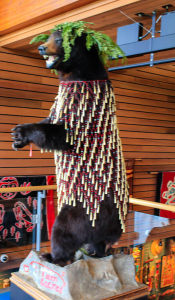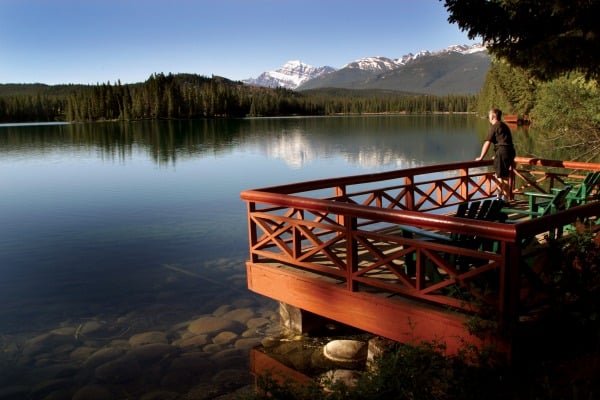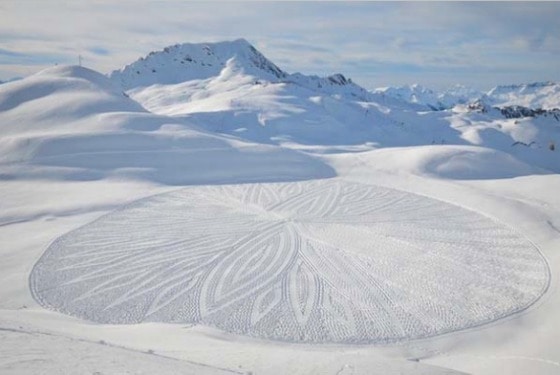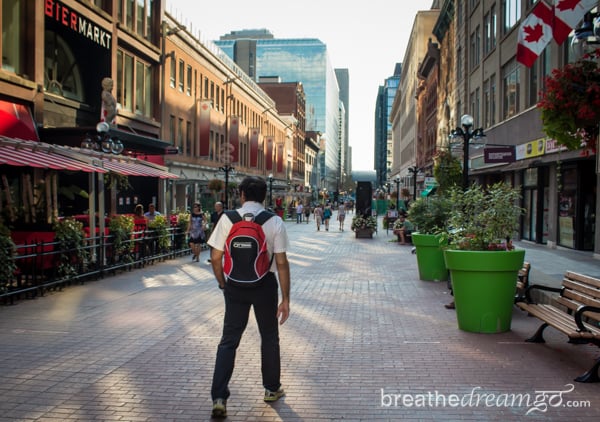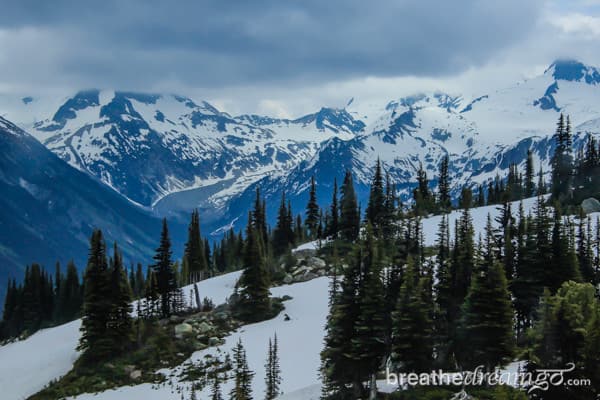
Table of Contents
My visit to an Indigenous cultural centre transformed the way I saw Whistler and the world
SUDDENLY, THE HULKING mountain looked like a lair for mythical, winged creatures. The misty blue islands seemed to be floating freely in the placid grey waters. Huge boulders were no longer just rocks, but the remnants of a battle between giants. And the highway I was travelling on, the famous Sea-to-Sky that runs between Vancouver and Whistler, bore traces of an ancient trade route.
My visit to the Squamish Lil’wat Cultural Centre in Whistler had literally changed the way I saw the world.
The Sea-to-Sky corridor is much more than spectacular scenery — it is also a Cultural Journey.
Looking out the window of the bus at mystical Howe Sound, everything looked different than it did just three days before, when I rode the bus up to Whistler, along this same highway. The land was the same, but I was different.
On the drive back to Vancouver, I looked at the mountains, the ocean and the trees and saw them as sacred, as alive, and as active characters in the story of this beautiful landscape. I was excited to remember some of the mythology I learned, and dug the Squamish Lil’wat Cultural Centre (SLCC) brochure out of my pack. Inside, there’s a map of the Sea-to-Sky corridor showing many of the landmarks of their story, and you can stop at kiosks and lookouts on a self-guided journey.
My visit to the SLCC literally changed the way I saw the world — which is a lot to be said for a short visit to a cultural centre and museum.
Planning a trip to Canada? The Canada Travel Guide has everything you need to know to visit Canada!
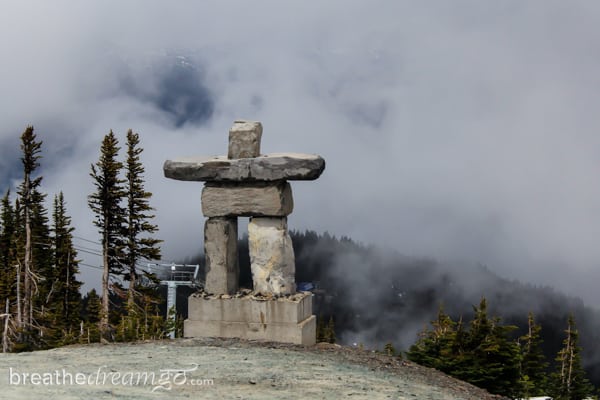
A showcase for the legends, culture and people
I went to Whistler, British Columbia expecting to visit a top-rated mountain resort and enjoy the many recreational and fine dining options. And I did. I stayed at the elegant Four Seasons Hotel, rode the spectacular Peak-to-Peak and soaked at the Scandinave Spa — and they were all wonderful experiences.
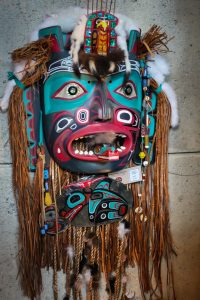
The Squamish Lil’wat Cultural Centre (SLCC) showcases the Indigenous history, culture, art and spirituality of this region. Whistler — the mountain and surrounding area — is the borderland between the Squamish and Lil’wat nations, and the land historically belonged to both, which is why the museum and cultural centre was built here.
The stunning, glass-fronted building houses exhibitions, artefacts, a cafe that serves Indigenous-inspired foods and a store that sells locally made arts and crafts. The grounds feature walking trails and traditional dwellings, including a longhouse, where you can try your hand at making a cedar bracelet.
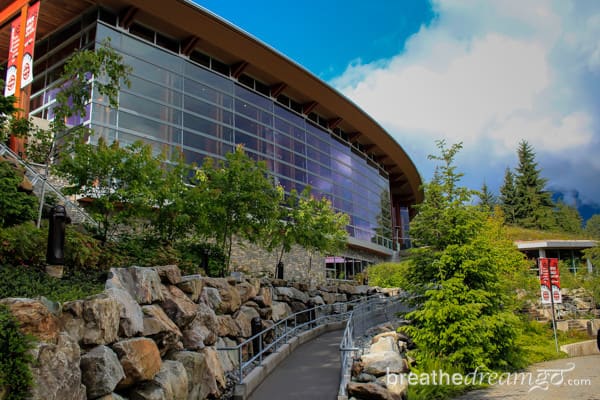
Arriving at the SLCC, you are welcomed by a local guide from the Squamish or Lil’wat nations. The youthful guides are ambassadors for their people, and the centre gives them both employment opportunities and helps teach them about their own cultural heritage, keeping it alive in the face of increasing encroachment.
My guide, a young woman named Charlamain Mersades Jim, is one of four siblings in the same family who work at the SLCC. My tour started with Charlamain performing a Women’s Warrior Song. It was followed by a short and informative movie, a guided tour of the building and exhibits and finally a chance to experience making a craft (a cedar bracelet).
The land is our people. It speaks to us and tells us who we are and where we’re going. The mountains were gifts from the creator. We were given the responsibility to look after them. To understand us, you must see our relationship to the land, rivers, forests.
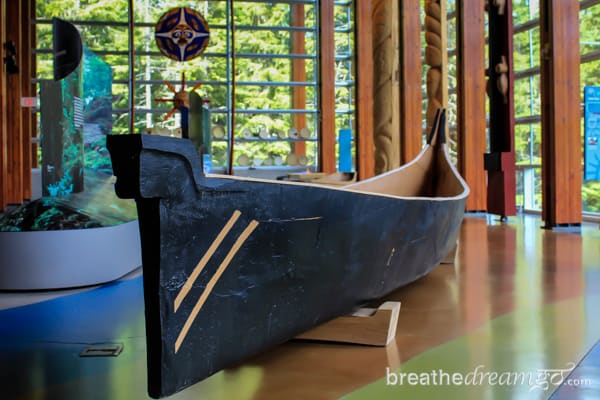
Charlamain and some of the other staff members I spoke with explained to me how the Squamish and Lil’wat people lived in close connection with the land. For example, if they needed cedar wood for making household objects, they stripped only two hand-widths of bark from each tree, ensuring the trees would heal.
They spoke extensively about their spiritual beliefs, and I was surprised to learn they believed in reincarnation. Each person belongs to a clan, named for a totem animal, and it is believed you will come back as that totem animal. So, if you are a member of the bear clan, you will not hunt and kill bears.
There are so many good reasons to visit the Squamish Lil’wat Cultural Centre, from learning about Indigenous culture to helping support an organization that has revitalized the people of these nations. The building of the SLCC solved a land dispute between the Squamish and Lil’wat; it has provided training, skill development and employment opportunities for the youth; and it has preserved the cultural heritage of two of Canada’s Indigenous nations.
Visiting the SLCC is a Canadian Signature Experience. You can learn more about it by checking out their website here.
A recreation destination for every season
To get to Whistler from Vancouver by car, you drive about two hours along the Sea-to-Sky highway. This appropriately named roadway wends its way along the dramatic coastline of British Columbia as it ascends into the Coast Mountains. The views around each curve are more stunning than the last, making the journey almost as rewarding as the destination. And it is a journey worth taking for many reasons.
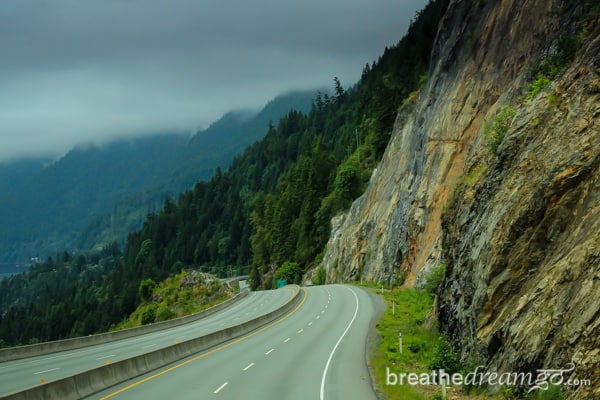
Whistler’s reputation as one of the world’s top-ranked ski destinations is beyond question. Many of the 2010 Winter Olympics events were held here, and it’s consistently ranked the number one mountain resort in North America.
But I visited in summer, which draws even more tourists and recreation enthusiasts. Hiking, wild life viewing, mountain biking, relaxing and dining are some of the main draws. The name Whistler comes from the sound a hoary marmot makes. Apparently, hoary marmots whistle.
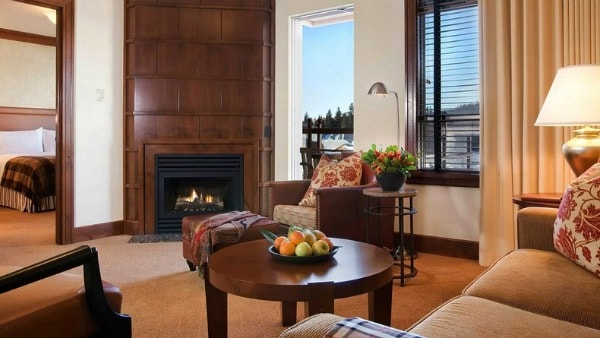
Whistler is not only surrounded by spectacular mountain scenery, it is spectacularly clean and well-maintained. When I got off the bus in the centre of the small town, another smaller shuttle bus was waiting there to take me to the Four Seasons Hotel. The driver of the big bus smiled at me as I got down, and the driver of the shuttle bus smiled at me as I got in. After the gorgeous scenery, the second thing I noticed about Whistler is that everyone smiles. A lot.
The Four Seasons is at the far edge of town, at the base of Blackcomb Mountain, and it’s a spectacular destination on its own. A handsome wood-and-stone structure, the Four Seasons is the top-rated, luxury resort in town. It elegantly captures the mountain resort look-and-feel with Indigenous art and other artefacts on display. I especially loved the outdoor swimming pool and spa with, yes, spectacular mountain views and all the service and amenities that Four Seasons is famous for around the globe.
Thrilling ride on the Peak-to-Peak between mountains
I was in Whistler for two specific reasons, both Canadian Signature Experiences: the Squamish Lil’wat Cultural Centre and the Peak-to-Peak gondola ride from Whistler Mountain to Blackcomb Mountain. So, after unpacking and enjoying the views from my suite, I headed for the centre of Whistler village and the gondola ride up to the top of Whistler mountain.
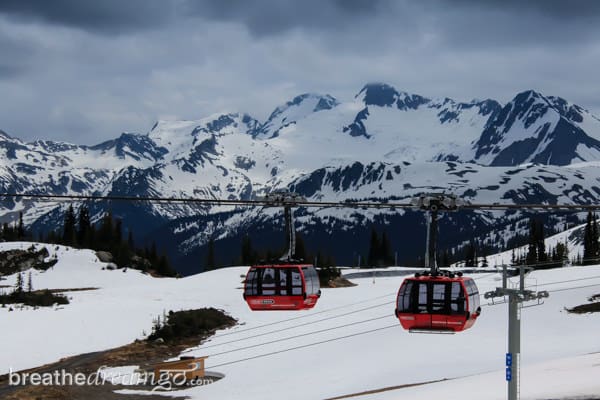
I am not a skier (nor do I want to be) so I was really surprised by the height of Whistler mountain and the extensive infrastructure that supports the sport. Standing at the top, by the Olympic rings, it was chilly and brisk even on a warm June day. You definitely need a warm jacket for this trip.
While taking the requisite photos of the Olympic rings, I met a family from Bombay, and I rode the Peak-to-Peak gondola with them to the other side, to the top of Blackcomb Mountain. It’s a thrilling ride to be suspended from a cable between two mountains, with views in every direction, from the valley floor to the village of Whistler, to the mountain range in the distance. Even when you are the lowest point between the mountains, you are still higher from the ground than the height of the Eiffel Tower in Paris.
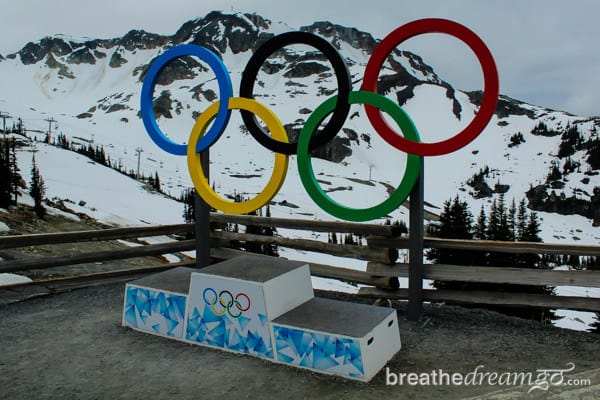
On either side, there are cafes and shops, washrooms and indoor and outdoor seating. You can easily make the Peak-to-Peak trip a fun half-day experience, which the entire family will enjoy.
My last and final special experience in Whistler was soaking in the waters of Scandinave Spa. I spent a couple of hours at dusk soaking in the outdoor pools, set in an evergreen forest on the outskirts of Whistler. Scandinave Spa combines two things I love: nature and wellness. Alternating hot and cold water, called hydrotherapy, is very relaxing and by the end of my time there, I was in a bliss state.
Thanks so much to the Four Seasons, Scandinave Spa, BC Tourism and especially Whistler Tourism for hosting me on this very special weekend.
Links to help you plan your trip to Whistler:
- Keep Exploring Canada: Official site of the Canadian Tourism Commission
- Tourism Whistler
- Hello BC: Official site for British Columbia Tourism
- Vancouver Tourism site
- Four Seasons Hotels, Whistler
- Squamish Lil’wat Cultural Centre


